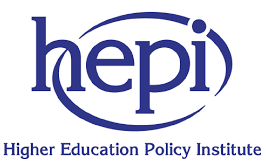The HEPI/Kortext report on students’ use of generative AI is a wake-up call: students are making extensive use of generative AI in increasingly sophisticated and discriminating ways. For academics and university leaders who are not specialists, it’s hard to appreciate the sophistication of the large language models [LLMs] which underpin generative AI. All this makes thinking about AI in HE exciting – because the pace of development is so fast that it is difficult to keep up, and dangerous – because the pace of development is so fast that there seems to be little solid ground. In this blog, we are going to offer seven propositions for institutional leadership on AI. In order to do that, we’ll prepare the way with some comments on what we know about technology in education, and about strategic change in universities.
Over the long term, and despite extraordinary technological change, university teaching models have proved remarkably resilient. Despite this, there has been a persistent tendency to overestimate the effect of any new technology in the short run and underestimate the effect in the long run. This means that institutional leaders can be badly attuned to the implications of novel technologies, and focus on short-term problems rather than long-term possibilities. In the short run, universities have tended to focus on the threats that generative AI poses to current models of assessment in terms of cheating, rather than on the opportunities to review and overhaul models of teaching and learning.
The tendency to conservatism in practice often isn’t helped by technology enthusiasts: almost all technology advocates tend to over-claim benefits and understate the implementation challenges of innovation: the challenge is embedding change, not technology innovation. In respect of AI in teaching and learning, claims have focused essentially on three areas: the ability to accelerate the acquisition of complex ideas, to personalise experience and the impact on assessment. All three need looking at in relation to each other and to the capabilities and capacities of the institution to handle complex change.

